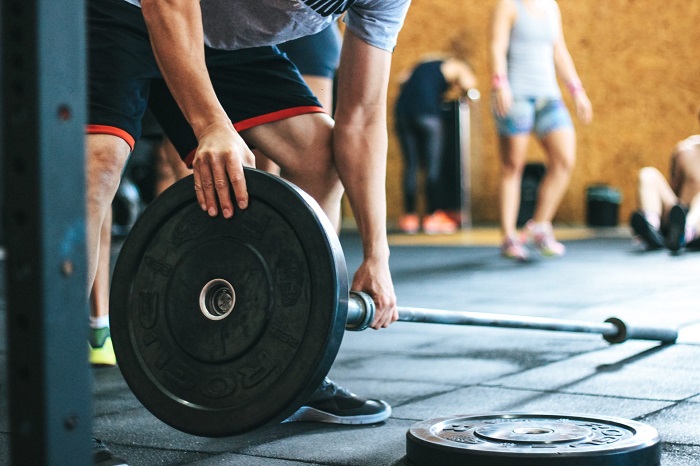The key to answering this question is recovery – the quantitative and qualitative factor of the body’s ability to make up for all the gaps and wasted energy resources, to conduct compensation and supercompensation. This is influenced by many factors, but it is worth highlighting the main ones:
– The level of severity of training (determined by weight, intensity, duration, etc.);
– The level of fitness of a person (determined by the experience, the degree of perception of physical exertion).
It is these points that mainly and mainly affect the ability to recover.
Minimum recovery time after daily exercise
It is believed that a person needs at least 24 hours to rest and fully recover before the next workout. Such an interval is appropriate:
– Beginners with no more than 2-3 months of experience;
– Older people aged 50 and up;
– People who lightly exercise in the gym, attend fitness classes, gyms.
A day is the necessary minimum to defend the next day’s workout. During this period, the body can build new structures in the form of enzymes, mitochondria, muscle fibers, recharging with energy before the next activity.
Is it really that simple?
Maximum recovery time after daily exercise
This figure is often defined as three days. Anything beyond this figure will not improve body composition or muscle bulk and power. Such an interval is appropriate:
– people aware of hardcore and heavy weights;
– people who intensively and volumetrically train big muscle groups (legs, back).
All figures are indicative, they should not be taken as exact data.
How often should each muscle group be trained?
Often, everyone who is not lazy repeats that the pectoral muscles should be trained no more than once a week, or the abs should be chiseled daily. Does it correspond to reality? For successes in building muscle mass to be continuous, it is necessary to pick up the recovery time for yourself personally. To do this, the following basic principles must be considered:
– Large muscle groups need more rest; small muscle groups need less rest;
The size of a muscle unit determines the amount and severity of its workout. They also require more rest. You should remember the following memo and always refer to it when calculating the necessary rest time. Often guys train two muscle groups, one of them is a large muscle group. Usually the big loads are on the legs, with a combination of loads on the arms and shoulders. This is not a good approach. The legs are 50% of a person’s total muscle mass, and therefore training together with anything else is not a good approach. In fact, there will be deficiencies everywhere. Instead, you should allocate a full day’s workout to the legs and work them only. Consequently, 50% of the muscles (legs) need more rest than 25% of the muscles (arms, for example). Small muscle groups (biceps, triceps, shoulders) need much less recovery time than the large muscles. That’s why they can be trained more often. But keep in mind that it is the smaller groups that are used while working on the larger muscle groups. For example, when training the chest, the triceps and shoulders are used as secondary muscle groups. The same goes for the biceps used during back training.
– Beginners should rest less;
It may seem completely unfair to some to discriminate for seniority. But it’s not discrimination! It’s much simpler than that. Trainees find it difficult to work the same weight and intensity as their more advanced fellow gym-goers. Their muscles are not subject to the same amount of damage as the muscles of jocks with seniority. Beginners recover from training much faster and for them, for example, a 36-48 hour rest rule applies when training large muscle groups, whereas their more experienced brethren rest 48-72 hours.
– More rest for intermediate and advanced lifters;
This category of athletes can pull iron hardcore. This does damage to their muscles with weights and intensity that is comparable with that of their less “seasoned” counterparts in iron. In most cases they are with “meat” and work out according to the split principle, dividing muscle groups and working out only one muscle unit at a time. So, it comes out that they train each different muscle group on a particular day. From that, the muscle being trained is rested for the entire week until the next workout. For example, if the pecs were trained on Monday the 22nd, their next workout would be on the 29th.
– Sets and duration of the workout;
It’s no secret that the best “pure” time under load is 40-45 minutes. How long will the session last, is determined by the number of sets and reps. It’s necessary to follow the rule – many sets (4-6) for big muscle groups, few sets (1-3) for smaller ones. One rehearsal can last 6 seconds, if the total number of reps in a set is 8, we get 48 seconds x 4-6, and the result will be 192-288 seconds for one major muscle group, for example, the quadriceps. If you perform 3-4 such approaches during training, the duration of “pure” training will be about 900 seconds, or 15 minutes. Add sitting between sets, a walk around the gym, talking to each other, and you have a workout of about 1 hour.














